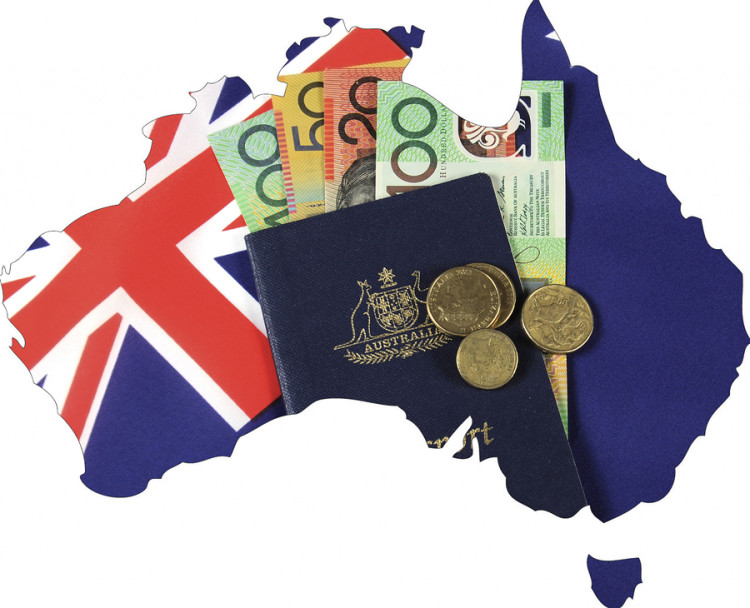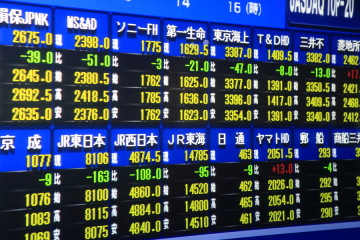Dollar Holds Retreat as Data Dims Rate Rise Outlook; Crude Slips

©2015 Bloomberg News
NOBB9R6K513R
(Bloomberg) — The dollar maintained losses, trading near an almost four-month low versus Australia’s currency after stagnant U.S. retail sales data fueled speculation policy makers will put off interest-rate increases. Oil dropped. The Aussie was steady at 81.12 U.S. cents by 9:41 a.m. in Sydney, after jumping 1.7 percent Wednesday as the Bloomberg Dollar Spot Index slipped to its lowest level since January. New Zealand’s dollar climbed after retail sales growth exceeded economists’ estimates. U.S. stock futures rose 0.1 percent while contracts on Asian indexes were mixed in recent trading. Australian government bonds retreated after Treasuries resumed losses with European debt. U.S. oil slipped a second day. While economists projected a slight increase, retail sales barely moved in April, casting doubt on how soon the Federal Reserve will move on rates as officials monitor data for signs of a recovery following weakness in the first quarter. Concern government debt sales are swamping demand is exacerbating the global bond selloff, which has seen more than $400 billion in value erased in about three weeks. Japan posts machine-tool orders Thursday and the Philippines reviews borrowing costs. “The negative effects of bad weather conditions and the stronger dollar, cheaper oil appear to have spread widely, it hasn’t been contained to the March jobs data,” Mitsushige Akino, executive officer at Ichiyoshi Asset Management Co. in Tokyo said by phone, referring to the retail-sales report. “I expect global yields to rise for the rest of the month — bonds were overbought.”
Rising Yields
Yields on Australian notes due in a decade climbed six basis points, or 0.06 percentage point, to 3.01 percent, while rates on New Zealand debt rose for a third day, to 3.69 percent. The NZX 50 Index lost 0.2 percent in Wellington. The kiwi climbed 0.6 percent in a third day of gains, with retail sales expanding 2.7 percent in the first quarter, beating the 1.6 percent projected by economists. In the U.S., benchmark 10-year Treasury notes initially rose after a $24 billion sale of government debt, before resuming their retreat. Yields added four basis points to 2.29 percent, after touching 2.36 percent on Tuesday, the highest level since Nov. 14. They’re up from as low as 1.80 percent in April. “We’ve been at the mercy of the bond market because of a news vacuum with corporate earnings finished,” said Kelly Bogdanov, vice president and portfolio analyst at RBC Wealth Management in San Francisco.
Asian Futures
Bonds across the euro area dropped Wednesday on concern sales from Asia to the U.S. will overwhelm demand for sovereign securities. German bunds, which have been at the epicenter of the month-long selloff in fixed-income, saw yields climb for the 12th time in 13 sessions. The Stoxx Europe 600 Index fell 0.2 percent in a second day of declines. Japanese index futures diverged, with contracts on the Nikkei 225 Stock Average bid for 19,670 on the Osaka pre-market, from 19,780 at their close in Japan yesterday. Futures traded in Chicago rose 0.1 percent to 19,655. The measure ended Wednesday up 0.7 percent at the highest level since April 28. Futures on the Kospi index in Seoul dropped 0.2 percent in most recent trading, and contracts on Australia’s S&P/ASX 200 Index were down 0.4 percent. Chinese prices for iron ore, the country’s biggest export, fell for a second day Wednesday, declining 0.5 percent. The Aussie touched 81.24 U.S. cents Wednesday, its strongest intraday level since Jan. 22.
Oil Refineries
Hang Seng Index futures in Hong Kong rose 0.1 percent while contracts on the Hang Seng China Enterprises Index, a gauge of mainland shares traded in the city, fell 0.2 percent. Futures on the FTSE China A50 Index added 0.1 percent in Singapore. Both Japan and South Korea report on money supply Thursday while India updates wholesale prices. Indonesian markets are closed for a holiday. West Texas Intermediate crude slipped 0.6 percent to $60.11 a barrel after U.S. government data showed refineries reduced their oil use by the most in almost four months.
Gold for immediate delivery was little changed at $1,214.03 an ounce after rising to as high as $1,219.04 Wednesday, its highest price since April 6. The prospect of a delay in U.S. rate increases boosted precious metals, with silver also near a five-week high.
–With assistance from Jeremy Herron in New York.
To contact the reporters on this story: Emma O’Brien in Wellington at eobrien6@bloomberg.net; Yuko Takeo in Tokyo at ytakeo2@bloomberg.net To contact the editors responsible for this story: Emma O’Brien at eobrien6@bloomberg.net John McCluskey







No Comment